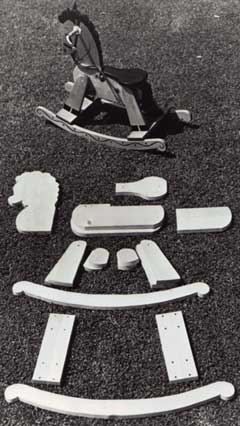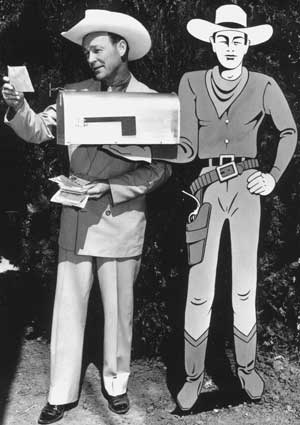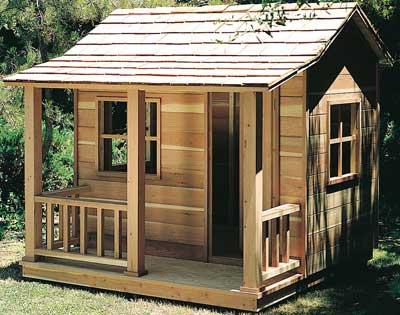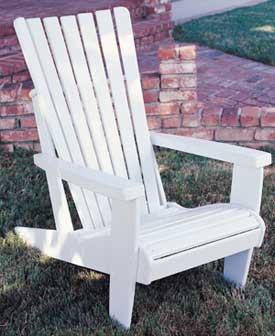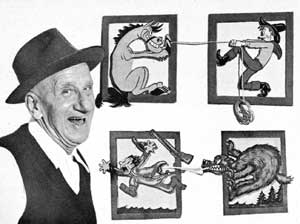
Back in 1948, cookie-cutter houses were spreading across the San Fernando Valley as fast as the plywood mills could churn out roof sheathing. The G.I.s were home, prosperity was up, and America was beginning to embrace some well-deserved post-war leisure time. In the midst of this new suburban bliss, Steve Ellingson had a novel idea.
While watching his wife sew one day, Ellingson wondered if the concept of sewing patterns could be adapted to woodworking. Why not make full-size, traceable patterns for complex or curved project parts? It seemed like a plausible solution that could take some of the difficulty out of project building.
For that matter, why not offer everything a beginning to intermediate woodworker would need to complete a project: a shopping list, cutting schedule, exploded-view drawings and step-by-step instructions? All packaged together for a low price with traceable patterns? That would swing the doors of woodworking wide open to most anyone with a saw and a hammer.
So he drafted the first project and launched U-Bild Woodworking Plans. Turns out, it was a great idea.
After more than 60 years, U-Bild is still selling essentially the same product Ellingson first developed. Traceable patterns have not lost their practicality. Kevin Taylor, U-Bild’s president and co-owner, estimates that they’ve sold between 4 and 5 million woodworking project plans since the 1950s—probably more woodworking designs than any other company in history.
But, full-size traceable patterns weren’t the only key to Ellingson’s success. He had a few more savvy ideas to help U-Bild along. Hollywood was just up the road, with actors waiting for more opportunities to get in front of a camera. In the 50s, Ellingson convinced Hollywood agents to put some of their biggest stars next to U-Bild’s completed projects. What better way to “sell” a cowboy mailbox project than to have Roy Rogers pull his fan mail out of it? For several decades, U-Bild became a cameo opportunity for the likes of Jane Mansfield, Lawrence Welk, Jimmy Durante, Monte Hall, Bob Barker and other television and big-screen celebs.
At the same time, Ellingson created a syndicated “Project of the Week” newspaper column, which featured a photo of a U-Bild finished project, some descriptive copy with project dimensions and a phone number to order plans. During its heyday, “Project of the Week” ran in between 300 and 400 dailies; it’s still carried by about 75 newspapers nationwide.
Early on, Ellingson created the project plans himself. Eventually, he outsourced that work to independent contractors. Then, in the mid 1970s, he began to work with two local project designers—Dave and Don Runyan—identical twin brothers who are also high school shop teachers. It’s been steady partnership since that time.
“Over the course of 35 years, the Runyans have developed at least 200 plans for the company. Possibly even more. They are our primary project designers,” says Kevin Taylor.
In all, U-Bild currently offers about 350 woodworking plans, modeled closely after Ellingson’s original “trace, saw and assemble” concept—and still priced affordably. Project plans sell for between $8.95 and $10.95. Full-size patterns are included, where curved parts or complex joinery require them. Each project also includes step-by-step photos, and some even have downloadable PDF patterns. For those projects that require special hardware, U-Bild sells 60 different packaged hardware kits.
The company continues to create new plans each year. Taylor says the design inspiration comes from “every imaginable source and anything that catches our eye.” U-Bild creates as many as 18 new plans each year. The Runyan brothers develop the new concepts. Then they design a complete prototype, develop the CAD drawings and photograph the step-by-step building process. Occasionally, older plans are also updated to help make them more contemporary.
Many of Ellingson’s original project plans are still available today. For instance, his Adirondack style chair continues to be a bestseller. So is “Slivers,” a rocking horse project that has never lost its appeal with children.
“We get calls quite often from customers who tell us their fathers or grandfathers made a Slivers Rocking Horse, and they want to buy the plans to build it again for another generation,” Taylor says.
Other perennial favorites include traditional outdoor furniture and lawn décor such as windmills and lighthouses. Hope chests, cradles, cribs, toys and other kids’ projects are hot items, too. U-Bild plans really extend to all corners of woodworking, including woodturning. The company even sells more DIY-focused plans for building sheds, trellises, play structures, a pond and many more. You can build a deck, a cabin or even a whole house with a U-Bild plan.
Taylor says the company fills nearly 1,000 orders each week. He attributes the enduring popularity of “trace, saw and assemble” plans to several factors that haven’t changed since Ellingson started the company all those years ago.
“Spending $10 on one of our plans will save you at least that much money on wasted lumber alone. And, since most of our projects are based on simple butt joints and dowel construction, they’re accessible to most woodworkers with basic skills. But no matter how easy a project may be, it has to look good when it’s done. I think we continue to do a great job of offering attractive projects, and that will always be our goal.”
